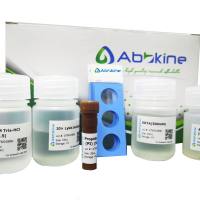Direct DNA Sequencing of Complementary DNA Amplified by the Polymerase Chain Reaction
互联网
| 1. |
The use of 5′-end-labeled DNA-sequencing primers that are complementary to regions between the PCR primers (3 );
|
| 2. |
Gel purification of amplified DNA to remove unwanted fragments and primer (4 );
|
| 3. |
Spin columns for the separation of leftover primers from high mol wt material (5 , 6 );
|
| 4. |
“Asymmetric” or “unbalanced” PCR priming to generate an excess of single strands during the initial amplification (7 );
|
| 5. |
Addition of dimethylsulfoxide (DMSO) to sequencing reactions with short annealing times (8 ); and
|
| 6. |
The use of several short, high-temperature, sequencing cycles (9 ).
|









